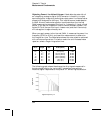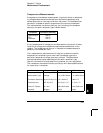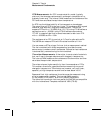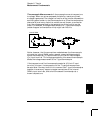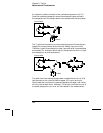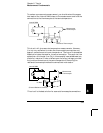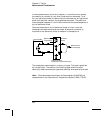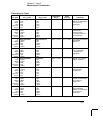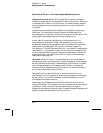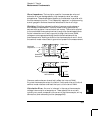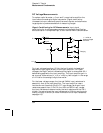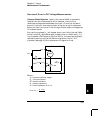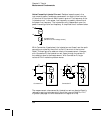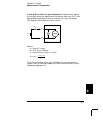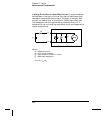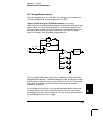
Sources of Error in Thermocouple Measurements
Reference Junction Error A thermocouple is typically formed by
welding or soldering two wires together to make the junction. Soldering
introduces a third metal into the junction. Provided that both sides of
the thermocouple are at the same temperature, the third metal has
little effect.
Commercial thermocouples are welded using a capacitive-discharge
technique. This technique is used to prevent overheating of the
thermocouple wire near the junction and to prevent the diffusion of the
welding gas and atmosphere into the thermocouple wire.
A poor weld or bad solder connection can also cause errors in a
thermocouple measurement. Open thermocouple junctions can be
detected by checking the resistance of the thermocouple. A resistance
measurement of more than 5 k
Ω typically indicates a defective
thermocouple. The 34970A contains a built-in, automatic thermocouple
check feature. If you enable this feature, the instrument measures the
channel resistance after each thermocouple measurement to ensure a
proper connection. For more information on using the thermocouple
check feature, see page 107.
Diffusion Error Diffusion in a thermocouple wire is the process of
changing the alloy type along the wire itself. Atmospheric particles can
actually diffuse into the metal. These changes in the wire alloy introduce
small voltage changes in the measurement. Diffusion is caused by
exposure to high temperatures along the wire or by physical stress to
the wire such as stretching or vibration.
Temperature errors due to diffusion are hard to detect since the
thermocouple will still respond to temperature changes and give nearly
correct results. The diffusion effects are usually detected as a drift in
the temperature measurements.
Replacing a thermocouple which exhibits a diffusion error may not
correct the problem. The extension wire and connections are all subject
to diffusion. Examine the entire measurement path for signs of
temperature extremes or physical stress. If possible, keep the temperature
gradient across the extension wire to a minimum.
Chapter 8 Tutorial
Measurement Fundamentals
352



